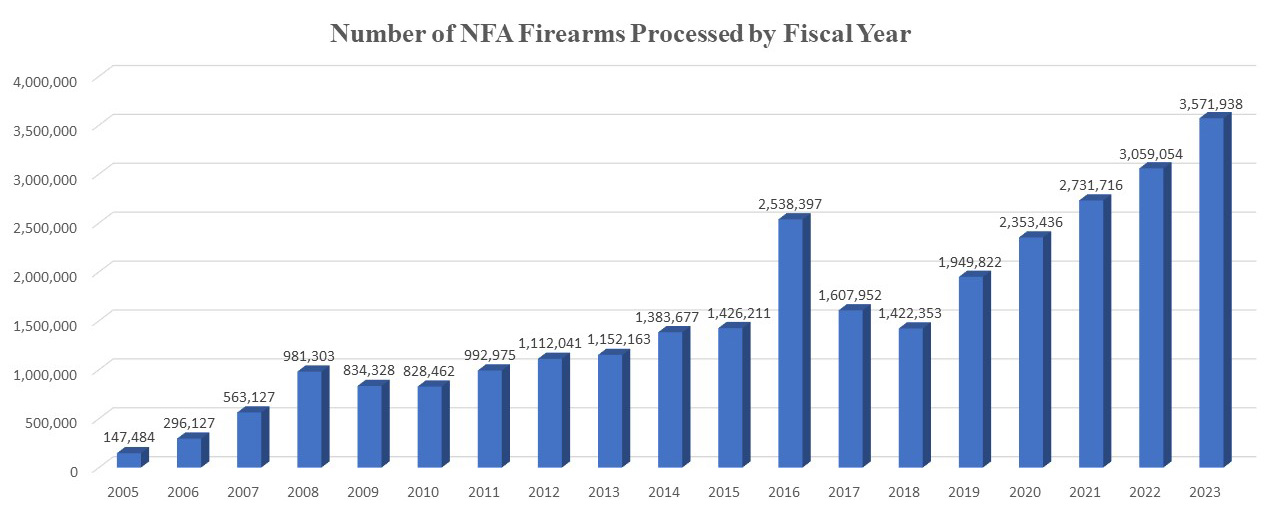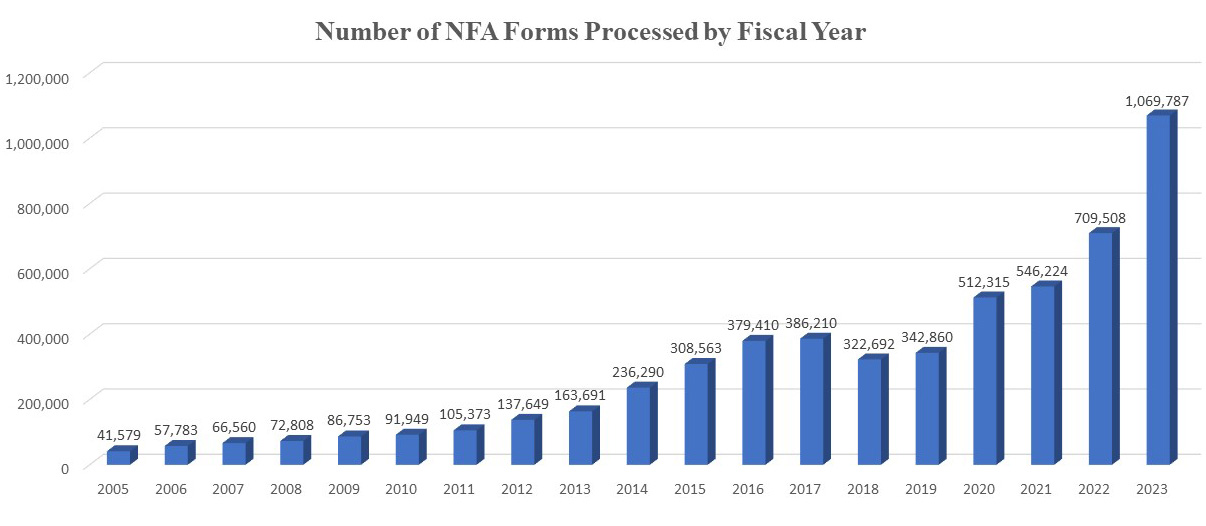
Available from no other source, this comprehensive collection of ATF-related data from national surveys, state-based surveys, other collected license statistics, and other data sources documents trends in firearms, commerce and use of federal services in the United States.
United States Bomb Data Center (USBDC)
The annual Explosives Incident Report (EIR) and Arson Incident Report (AIR) reviews bombing and explosives and arson related incidents and threats from information reported to the United States Bomb Data Center through the Bomb Arson Tracking System (BATS).
Please note, the reports in PDF format below are not fully Section 508 compliant. We are working quickly to ensure they are accessible for all users of our site.
2023 Explosives Incident Report
2022 Explosives Incident Report
2021 Explosives Incident Report
2020 Explosives Incident Report
2019 Explosives Incident Report
2018 Explosives Incident Report
2017 Explosives Incident Report
2016 Explosives Incident Report
2015 Explosives Incident Report
In addition to these reports, the Juvenile Offender (Fire) Incident Report and the House of Worship (HOW) Incidents in the United States also use information reported to USBDC from BATS.
2019 House of Worship Incidents in the United States
2019 Juvenile Offender (Fire) Incident Report
Listing of Federal Firearms Licensees
A list of all federally licensed manufacturers, dealers, collectors and importers of firearms and destructive devices are available by state for each month of the calendar year.
View all federal firearms licensees
Firearms Trace Data
A key component of ATF's enforcement mission is the tracing of firearms on behalf of thousands of local, state, federal and international law enforcement agencies. Firearms trace data is critically important information developed by ATF. ATF has prepared the following state-by-state reports utilizing trace data which is intended to provide the public with insight into firearms recoveries.
U.S. Firearms Trace Data by Major City
U.S. Firearms Trace Data by State
International Firearms Trace Data
Canada |
The Caribbean |
Central America |
Mexico |
Firearms Compliance Inspection Results
ATF shares annual and monthly statistics on compliance inspection results for federal firearms licensees (FFLs). The numbers provided are for the most notable areas, and do not include all items identified by an industry operation investigator during an inspection.
View compliance inspection results
Annual Firearms Manufacturers And Export Report
 All federally licensed manufacturers of firearms and destructive devices (Federal Firearms License types 07 and 10) are required to submit a production report of manufacturing and export activity to ATF by April 1 of each year. The information must be reported using the Annual Firearms Manufacturing and Exportation Report Under 18 U.S.C. Chapter 44, Firearms (ATF Form 5300.11). The report covers activity for the calendar year ended the previous December 31. For example, calendar year 2018 data was due to ATF by April 1, 2019.
All federally licensed manufacturers of firearms and destructive devices (Federal Firearms License types 07 and 10) are required to submit a production report of manufacturing and export activity to ATF by April 1 of each year. The information must be reported using the Annual Firearms Manufacturing and Exportation Report Under 18 U.S.C. Chapter 44, Firearms (ATF Form 5300.11). The report covers activity for the calendar year ended the previous December 31. For example, calendar year 2018 data was due to ATF by April 1, 2019.
ATF compiles the submitted data and releases it here each January, with a one-year delay to comply with the Trade Secrets Act. For example, data released in January 2019 was for calendar year 2018. The January 2014 data release covers calendar year 2012 activity. In response to requests from the industry, ATF released interim AFMER data for the first time in July 2010. This release included aggregate data only and did not identify any specific industry member (to comply with the Trade Secrets Act).
Frequently asked questions related to AFMER are available in our Questions and Answers section. Any questions not covered there should be directed to the Federal Firearms Licensing Center Customer Service at 866-662-2750, or emailed to FFLC@atf.gov.
Please select a report by year below:
| 2022 | 2014 |
| 2021 | 2013 |
| 2020 | 2012 |
| 2019 | 2011 |
| 2018 | 2010 |
| 2017 | 2009 |
| 2016 | 2008 |
| 2015 | 2007 |
Firearms Commerce Report in the United States
This report presents data drawn from a number of ATF reports and records in one comprehensive document. It also provides comparative data from as far back as 1975 for context, analyses of trends over the years, and a fuller picture of the state of firearms commerce in the United States today.
Please note, the reports in PDF format below are not fully Section 508 compliant. We are working quickly to ensure they are accessible for all users of our site.
2021 Report on Firearms Commerce in the U.S.
2020 Report on Firearms Commerce in the U.S.
2019 Report on Firearms Commerce in the U.S.
2018 Report on Firearms Commerce in the U.S.
2017 Report on Firearms Commerce in the U.S.
2016 Report on Firearms Commerce in the U.S.
2015 Report on Firearms Commerce in the U.S. (This publication has been updated to correct 2013 firearms manufactured total in Exhibit 1.)
2014 Report on Firearms Commerce in the U.S
2013 Report on Firearms Commerce in the U.S.
2012 Report on Firearms Commerce in the U.S.
2011 Report on Firearms Commerce in the U.S.
Federal Firearms Licensee Statistics Theft/Loss Reports
Federal firearms licensees (FFLs) must report to ATF each missing, lost, or stolen firearm within 48 hours of discovery of the loss or theft by completing and forwarding a Federal Firearms Licensee Theft/Loss Report. In addition, the FFL must also report the firearm theft or loss to the appropriate local law enforcement agency.
Please select a report by year below:
National Firearms Act (NFA)
The National Firearms Act Division is responsible for the administration of the National Firearms Act (NFA) as amended, and regulations issued pursuant to the Act. It maintains the National Firearms Registration and Transfer Record (NFRTR), the central registry of all NFA firearms in the United States. The division acts on all applications to make, export, transfer and register NFA firearms; and processes notices of NFA firearms manufactured or imported.
Current Processing Times for ATF Applications

The above bar graph depicts the number of NFA firearms processed from applications captured in the NFRTR by Fiscal Year from FY 2005 to FY 2022; see table of data below.
Number of NFA Firearms Processed by Fiscal Year
|
Fiscal Year |
Firearms Processed |
|---|---|
| 2023 | 3,571,938 |
| 2022 | 3,059,054 |
| 2021 | 2,731,716 |
| 2020 | 2,353,436 |
| 2019 | 1,949,822 |
| 2018 | 1,422,353 |
| 2017 | 1,607,952 |
| 2016 | 2,538,397 |
| 2015 | 1,426,211 |
| 2014 | 1,383,677 |
| 2013 | 1,152,163 |
| 2012 | 1,112,041 |
| 2011 | 992,975 |
| 2010 | 828,462 |
| 2009 | 834,328 |
| 2008 | 981,303 |
| 2007 | 563,127 |
| 2006 | 296,127 |
| 2005 | 147,484 |

The above bar graph depicts the volume of applications captured in the NFRTR that were processed by the NFA Division by Fiscal Year to include FY 2005 to FY 2023; see table of data below.
Number of NFA Forms Processed by Fiscal Year
|
Fiscal Year |
Forms Processed |
|---|---|
| 2023 | 1,069,787 |
| 2022 | 709,508 |
| 2021 | 546,224 |
| 2020 | 512,315 |
| 2019 | 342,860 |
| 2018 | 322,692 |
| 2017 | 386,210 |
| 2016 | 379,410 |
| 2015 | 308,563 |
| 2014 | 236,290 |
| 2013 | 163,691 |
| 2012 | 137,649 |
| 2011 | 105,373 |
| 2010 | 91,949 |
| 2009 | 86,753 |
| 2008 | 72,808 |
| 2007 | 66,560 |
| 2006 | 57,783 |
| 2005 | 41,579 |

